SOEST Press Releases 2011
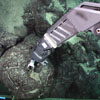 |
Nov 29: Lava fingerprinting reveals differences among Hawaii's twin volcanoesHawaii's main volcano chains – the Loa and Kea trends – have distinct sources of magma and unique plumbing systems connecting them to the Earth’s deep mantle, according to research published this week in Nature Geoscience by Geology and Geophysics professor Michael Garcia and colleagues at the University of British Columbia and the University of Massachusetts. Link to the press release (PDF). |
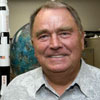 |
Nov 3: Klaus Keil to be honored at international meetingHIGP professor Klaus Keil, who has been an extraordinarily productive researcher and an outstanding administrator for 50 years; his wide-ranging research has covered all types of meteorites and Apollo lunar samples. He will be honored on 08 Nov 11 at the international Lunar and Planetary Institute’s workshop “Formation of the First Solids in the Solar System” on Kaua‘i. Link to the press release (PDF). |
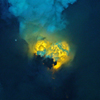 |
Oct 19: Fiery volcano offers geologic glimpse into land that time forgotSOEST and University of Washington scientists recently collected boninite, a rare, chemically distinct lava that accompanies the formation of Earth’s subduction zones. Geology Professor, Ken Rubin, and colleagues sampled lava from the West Mata volcano, erupting 4,000 feet (1,200 meters) below the surface in the Southwest Pacific Ocean. "Everything about the eruption itself – how fast, how intense, the ratio of lava to explosive fragments, the amount and composition of gas released – is new to us,” Rubin said. Watch clip of eruption on YouTube. Link to the press release (PDF). |
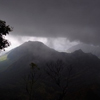 |
Oct 10: Changes in rainfall patterns are projected for next 30 yearsScientists at University of Hawaii – Manoa have projected an increased frequency of heavy rainfall events but a decrease in rainfall intensity during the next 30 years (2011–2040) for the southern shoreline of Oahu, according to a recent study published in the Journal of Geophysical Research. Link to the press release (PDF). |
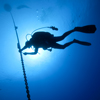 |
Oct 6: JIMAR named NOAA’s Pacific Island Region Cooperative InstituteThe University of Hawaii was selected by the National Oceanic and Atmospheric Administration (NOAA) to host the Cooperative Institute (CI) in the Pacific Islands Region as part of a 5-year award with funding up to $95M. The Pacific Islands Region CI will be known as the Joint Institute for Marine and Atmospheric Research (JIMAR). JIMAR research will focus on ecosystem monitoring and forecasting, ecosystem-based management, protection and restoration of natural resources, climate research and impacts, tropical meteorology, and tsunamis and other long-period ocean waves. Link to the press release (PDF). |
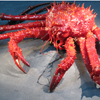 |
Sept 7: King crab threaten seafloor life near AntarcticaKing crabs and other crushing predators are thought to have been absent from cold Antarctic shelf waters for millions of years. Oceanography Professor, Craig Smith, and colleagues recently published a study indicating that one species of king crab has moved 120 km across the continental shelf in West Antarctica and established a large, reproductive population in the Palmer Deep along the west Antarctic Peninsula, threatening the seafloor diversity. Link to the press release (PDF). |
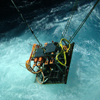 |
Aug 8: Illuminating the Deep Sea: First light at the ALOHA Cabled ObservatoryAt 10:23 am on June 6th, the University of Hawaii ALOHA Cabled Observatory (ACO) came to life, extending electric power and the Internet over a retired seafloor telecommunications cable from Makaha to Station ALOHA, 60 nautical miles north of Oahu, Hawaii. A video camera and hydrophones plugged into the ACO provide eyes and ears at the world's deepest cabled ocean observatory. Link to the press release (PDF). |
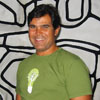 |
Aug 5: Milton Garces, 2011 PopTech Science and Public Leadership FellowPopTech, the global social innovation incubator and thought leadership network, today announced its 2011 class of Science and Public Leadership Fellows, including Milton Garcés, Associate Researcher at the Hawaii Institute of Geophysics and Planetology and Director of the Infrasound Laboratory (ISLA). Garcés works with very low frequency atmospheric sound, or infrasound, which can provide early warning of geophysical and geopolitical hazards. Link to the press release (PDF). |
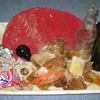 |
Aug 2: Oceanography Professor publishes study on human impact on deep seaOceanography Professor Craig Smith was one of over 20 deep-sea experts who conducted a semi-quantitative analysis of the most important anthropogenic impacts that affect deep-sea habitats at the global scale in the past, present and future scenarios published in Public Library of Science ONE on 1st August 2011. The authors identified which deep-sea habitats are at highest risk, as well as what will be the main anthropogenic impacts affecting these areas, including potential for biodiversity loss and, with this, the loss of many goods and services provided by deep-sea ecosystems. Link to the press release (PDF). |
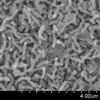 |
July 25: Mitochondria share an ancestor with SAR11, a globally significant marine microbeBillions of years ago, an astounding evolutionary event occurred: certain bacteria became obliged to live inside other cells, thus starting a chain of events that resulted in what is now the mitochondria, an organelle found in all eukaryotic cells. A recent study by researchers at the University of Hawaii – Manoa (UHM) and the Oregon State University (OSU) provides strong evidence that mitochondria share a common evolutionary ancestor with a lineage of marine bacteria known as SAR11, arguably the most abundant group of microorganisms on Earth. Link to the press release (PDF). |
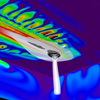 |
June 30: Hawaiian hotspot variability attributed to small-scale convectionSmall scale convection at the base of the Pacific plate has been simulated in a model of mantle plume dynamics, enabling reasearchers to explain the complex set of observations at the Hawaiian hotspot, according to a new study posted online in the June 26th edition of Nature Geoscience. “A range of observations cannot be explained by the classical version of the mantle plume concept,” says Maxim Ballmer, Post Doctoral Researcher in the Department of Geology and Geophysics. Link to the press release (PDF). |
May 9: Does the central Andean backarc have the potential for a great earthquake?The region east of the central Andes Mountains has the potential for larger scale earthquakes than previously expected, according to a new study posted online in the May 8th edition of Nature Geoscience. Previous research had set the maximum expected earthquake size to be magnitude 7.5, based on the relatively quiet history of seismicity in that area. This new study by researchers from HIGP and colleagues contradicts that limit and instead suggests that the region could see quakes with magnitudes 8.7 to 8.9. Link to the press release (PDF). |
|
May 2: ORE student Masoud Hayatdavoodi wins Link Foundation FellowshipMasoud Hayatdavoodi, a Ph.D. student in the Department of Ocean and Resources Engineering (ORE) has won the prestigious Link Foundation Ocean Engineering Fellowship for 2011-2012. This $25,000 award is the largest student prize in ocean engineering in the world. Congratulations Masoud! Link to the press release (PDF). |
|
April 5:Where Will the Debris from Japanʼs Tsunami Drift in the Ocean?The huge tsunami triggered by the 9.0 Tohoku Earthquake destroyed coastal towns near Sendaiin Japan, washing such things as houses and cars into the ocean. Based on a model derived from past trajectories of drifting buoys, projections of where this debris might head over the next 5 to 6 years have been made by Nikolai Maximenko and Jan Hafner at the International Pacific Research Center, University of Hawaii at Manoa. Link to the press release (PDF). |
|
April 5: A new Confocal Microscope is unveiled on Coconut IslandThe Hawaii Institute of Marine Biology (HIMB) at the University of Hawaii at Manoa (UHM) unveiled a new instrument to examine biological samples on Thursday, a Modular Laser Scanning (Confocal) Microscope. The microscope has the potential to provide groundbreaking research in marine biology, and is a powerful technique for looking at the structure and morphology of not only coral, but also the marine microorganisms that interact with them. Link to the press release (PDF). |
|
 |
March 18: Experts say virtually no threat to Hawaii from Japan nuclear radiationAccording to experts from the University of Hawai‘i at Mānoa’s Department of Meteorology, the risks to Hawai‘i from the situation at Japan’s Fukushima nuclear plant are extremely negligible. Link to the press release (PDF). |
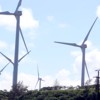 |
March 17: Wind & solar can reliably supply 25% of Oahu’s electricity need, new study showsWhen combined with on-Oahu wind farms and solar energy, the Interisland Wind project planned to bring 400 megawatts (MW) of wind power from Molokai and Lanai to Oahu could reliably supply more than 25% of Oahu’s projected electricity demand, according to the Oahu Wind Integration Study (OWIS), conducted by the Hawaii Natural Energy Institute (HNEI) at the University of Hawaii at Manoa, General Electric (GE) Company and the Hawaiian Electric Company (HECO). For the purposes of the research project, the OWIS released today studied the impact on the Oahu grid of a total of 500 MW of wind energy and a nominal 100 MW of solar power, though a good deal more utility-scale and customer-sited solar power is expected on Oahu. Link to the press release (PDF). Image courtesy of HECO
|
March 8: Pollution Forms an Invisible Barrier for Marine LifeResearchers at UH Mānoa's Hawaiʻi Institute of Marine Biology (HIMB) examined the genetic structure of a common, non-harvested sea star using a spatially explicit model to test whether the largest sewage discharge and urban runoff sources were affecting the genetic structure of this species. They found that these large pollution sources are not only increasing genetic differentiation between populations (presumably by limiting the dispersal of larvae between them) but also decreasing the genetic diversity of populations closest to them. Link to the press release (PDF). Image courtesy of J. Puritz, HIMB/SOEST
|
|
 |
March 7: UHM Professor Hope Jahren selected as Leopold FellowDr. Hope Jahren, a Professor in the Department of Geology and Geophysics at the School of Ocean and Earth Sciences and Technology at the University of Hawaii of Manoa has been selected as one of 20 environmental scientists that have been selected for the prestigious 2011 Leopold Leadership Fellowship Program. Jahren‟s research focuses on living and fossil organisms, and how they are chemically linked to the global environment. Using measurements of the stable isotopes of carbon, nitrogen, hydrogen and oxygen, Jahren and her research group are working to elucidate information about metabolism and environment, both in the Human environment, and through Geologic Time. Congratulations Hope! Link to the press release (PDF). Image courtesy of SOEST
|
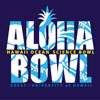 |
Feb 28: Punahou School wins 2011 Hawaii Ocean Science BowlOn Saturday, February 26th, 2011, high school students from all over the state and Guam competed in the ninth annual Hawaii Regional competition for the National Ocean Science Bowl (NOSB), the “Aloha Bowl”. Five high school students from Punahou School won the competition, and will represent Hawaii in the National Ocean Science Bowl April 29 – May 1 in Galveston, Texas. Members of the winning team include (from left to right in picture) ordan Kaneshige, Karl Heyer, Kai Aknin, Calder Atta, Phillip Lin, and Coach Dave Strang. Waiakea High School’s Team A took second place, with Maui High School coming in third. Link to the press release (PDF). Image courtesy of SOEST
|
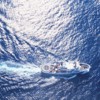 |
Feb 6: Tropical Atlantic Sees Weaker Trade Winds and More RainfallEarth’s global temperature has been rising gradually over the last decades, but the warming has not been the same everywhere. Scientists are therefore trying to pin down how the warming has affected regional climates because that is what really matters to people, and to adaptation and mitigation strategies. Their efforts, however, had hit a roadblock because the necessary observations of winds over the oceans were biased. Developing a new method to remove the bias, Hiroki Tokinaga and Shang-Ping Xie at
the International Pacific Research Center,
University of Hawaii at Manoa, found that
their corrected observations show the trade
winds in the tropical Atlantic have weakened
and the pattern of ocean surface temperature has changed. As a result, the equatorial Amazon and the Guinea
Coast are seeing more rainfall and the Sahel less. The findings are published online in the February 6, 2011, Link to the press release (PDF). Image courtesy of NOAA photo library.
|
News archives: 2015 • 2014 • 2013 • 2012 • 2011 • 2010 • 2009 • 2008 • 2007 • 2006 • 2005 • 2004 • 2003 • 2002Press release archives: 2015 • 2014 • 2012 • 2012 • 2011 • 2010 • 2009 • 2008 • 2007 • 2006 • 2005 • 2004 and earlierIf you have news to share, or would like more information about any of the above, please contact:
Mahalo! (Thank you!)
|
|


